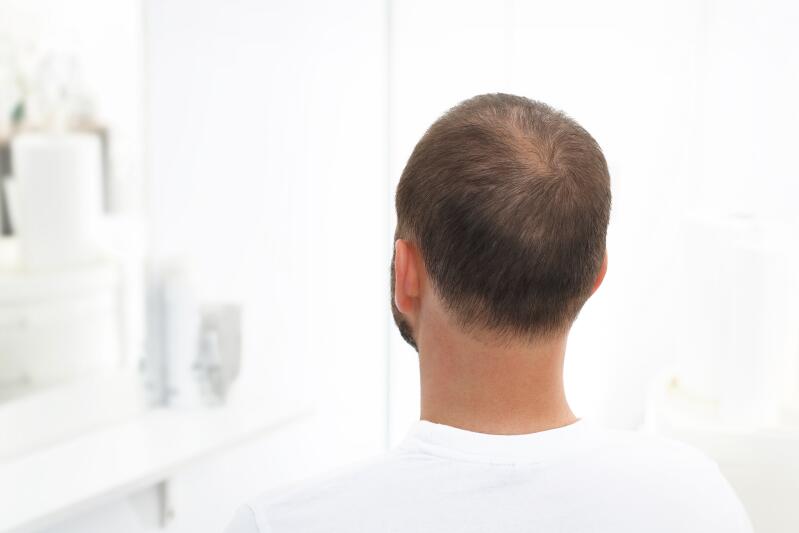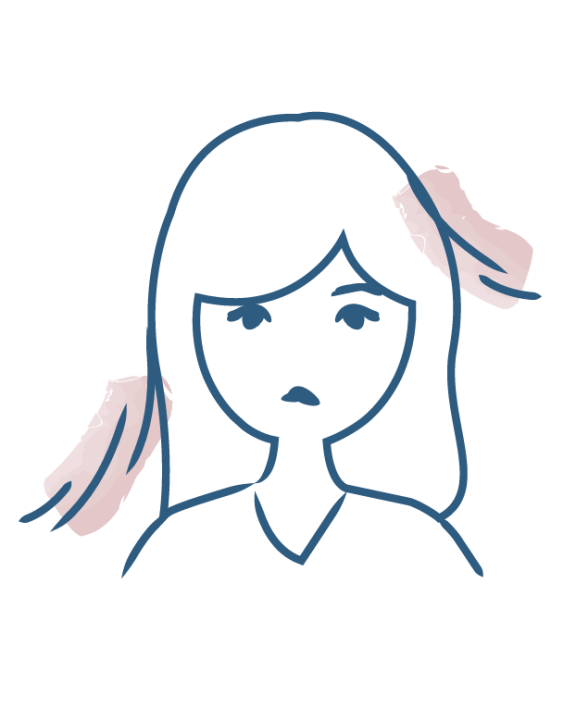-
Your concerns
Our articles to help you gain a better understanding
-
Our solutions
-
DUCRAY Dermatological Laboratories
Our articles to help you gain a better understanding

Androgenetic alopecia is a form of hair loss whose origin is very different from so-called reactional hair loss. It therefore requires adapted and specific treatment.
Androgenetic alopecia is a chronic and progressive type of hair loss that sets in with age. It is characterized by episodes of hair loss leading to miniaturization of the hair. This leads to a decrease in hair density, which can go right up to baldness, i.e., absence of hair. Androgenetic alopecia mainly affects men: 70% to 80% of men are affected during their lifetime, compared to 29% to 42% of women*. It generally begins between the ages of 30 and 40 in men, but can sometimes affect younger men, as early as puberty.
But what are the causes of androgenetic alopecia? Androgenetic hair loss is mainly of hormonal origin, involving the androgenic hormone receptors present in the hair follicles at the root of the hair. These receptors are stimulated in particular by testosterone. Their stimulation leads to a shortening of the hair growth phase (anagen phase): the hair no longer has the time to grow properly, the cycles follow one another and then eventually run out. The hair then becomes increasingly thin and short. We refer to this as the phenomenon of hair miniaturization, to the point of the appearance of light down that no longer covers the scalp and that eventually disappears for good.
Hormonal disturbances that occur at the time of menopause in women and andropause in men can accentuate the phenomenon and intensify hair loss.
Androgenetic alopecia in men is characterized by a loss of hair density on distinctive areas of the scalp: mainly the top of the head, with balding at the back of the head and on the forehead (appearance of a "V" shape). The hair around the skull is preserved (forming a crown).
The symptoms of female androgenetic alopecia also appear on the top of the head but in a more diffuse way. There is also a gradual decrease in hair density that allows the scalp to be seen. Women report that there is a "widening" of the central parting. This hair loss can also be localized at the temples.
This should not be confused with the symptoms of spot baldness, which is hair loss in patches.
Despite its strong hereditary background, alopecia does not appear overnight. The phenomenon is slow and takes years to establish itself on the scalp. Unfortunately, it is an irreversible type of hair loss. It is therefore not possible to stop it, but solutions exist to slow it down:
* Source: Blume-Peytavi et al., 2011; Norwood, 1975
Discover our complete range
Hair loss

Occasional hair loss
Are you experiencing hair loss?

Occasional hair loss
Are you experiencing hair loss?

Occasional hair loss
Are you experiencing hair loss?